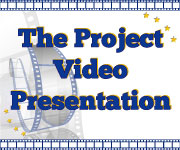basic information
THE INITIATIVE PROMOTER’S PERSPECTIVE
Lone Hagen, a German teacher in Denmark went to an international ESP conference where she met Thomas Peters and Ivan Soldo from The Netherlands and Germany and they started to plan and discuss the possibility of collaborating across the borders in communication via the internet. The basic idea was to work around different themes/subject areas.
They used e-mail and matched two classes on the same level of proficiency in German. They used the vocabulary that they had practiced in class but the difference was that the respondents were not classmates, but students their own age in another country. The fact that someone outside the classroom was the recipient of the information proved to be a motivating factor that was obvious early on.
Eventually - when the materials could be downloaded from WWW in Word – they could lead up to flexibility in the teaching and learning processes as their contents could be changed depending on the teacher's and students’ needs.
At the 4th ESP conference more teachers of German wanted to participate in the 'Das Bild' project, among those were Annie Ring Knudsen, Trørødskolen, DK.
Thomas, Lone, and Annie formed the small group of Das Bild developers over the next many years. From then on constant evaluation and refining of the project has been ongoing.
.
The evaluation and refining of ideas led to ‘Pupil's Pages' and a 'Teacher's Manual' offering a complete scenario for planning, undertaking, and evaluating the collaboration.
In 1993 Thomas Peters published a German/Dutch paper version of Das Bild - a result of cooperation between Augustinus College and the University of Amsterdam.
Two years later Lone Hagen and Annie Ring Knudsen published a Danish/German version of Das Bild with support from Professor Allan Malmberg, RDSES and with Kirsten M. Anttila and Mogens Eriksen as consultants. This version was called: "På Net med Verden".
Now the portal consists of eight different languages.
To develop relevant teaching material for international, computer based teaching in foreign languages and enhance the linguistic skills of the students through dialogue.
English and German were the communication languages of the collaborative Computer Supported Collaborative Learning (CSCL), in 1987, between students in different European countries. From the outset it was clear that it was necessary to have structure in this new and different cooperation across borders in foreign languages (with a diversity in themes). The European Council’s Threshold model, which was / is reflected in the teaching materials for foreign language teaching, but mainly used in oral language learning proved to be a good starting point for Das Bild and later The Image materials.
This project was a result of a collaboration with colleagues in different countries to develop a language material that could be used by all regardless of different cultures in teaching. (the Threshold model).
With continuous evaluation, lots of energy and commitment - despite little or no funds - they carried out the project.
The material was divided into 10 so-called letters with different themes: personal introductions, home, school, hobbies, hometown, region, and country etc. Students and teachers could add themes as well.
For example, The Das Bild material was used in 245 projects between classes / students in 36 countries in the year 2009 - 2010.
The English version: The Image, has had an average of 250.000 annual visitors to the portal where they download material to use in English teaching, but also as a material in connection with the creating of CSCL projects.
They were nominated for the award by colleagues.
They have held intro courses at the annual ESP conferences. In addition, the introduction to the material has been a part of the work in the EU Comenius projects PIST, ECOLE and PROMISE for teachers across the EU. In addition, they have held several courses in the Nordic countries, as well as in Zambia.
In addition, the project in 2006 entered into a Joint Action Agreement with eTwinning a project by CSS (Central Support Service in Brussels). Therefore, the material also been presented at several eTwinning workshops.
They have also created material such as brochures in English and Danish, which is used on relevant courses in Europe, which also refers to the Image language portal
The award hasn’t affected the project itself, but it has meant something to all the people who were involved in producing the material in the different languages and countries.
No, not since they were nominated, which they describe as a great honour.
THE NELLIP NETWORK’S PERSPECTIVE
The project consists with the following policies: It has a comprehensive approach. The needs of the students are identified and met. Added value. It provides an improvement in the teaching and learning of languages in a national context. It promotes multilingualism and collaboration across country borders.
The Danish national priority in 2006 was education and further education for teachers. The promotors of this project developed material for teachers, and this project is very consistent with the national yearly priorities.
Comments on this Case Studies
Date: 2014.05.18
Posted by Susanna Rosenqvist (Sweden)
Message: This project seems very well thought through. It looks very impressive and I\'m eager to try it out in my own classes next term!
